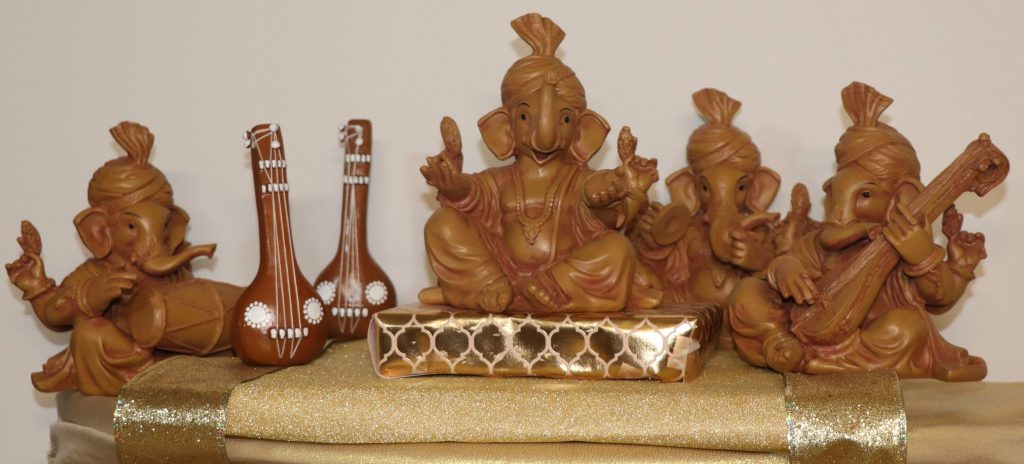Various forms of God and Goddesses
Gods and Goddesses
The Pantheon of Hindu Gods is vast. Yet, Hindus believe that there is only one ultimate reality; Brahman. There are many Gods and Goddesses that the hindus workship .Vedas mentions about 33 crore Gods and Goddesses in Hinduism. The primary Gods are the Trimurthis Brahma , Vishnu and Siva along with their consorts Sarasvathi, Lakshmi and Parvati respectively. We display several Gods and Goddesses in our Kolu in addition to the main kolu and the themed displays.
Goddess Lalita Tirupurasundari
Tripura means three cities or three worlds (Lokas), while Sundari means- a beautiful woman. The three cities symbolize the body, mind, and consciousness. Thus, Tripurasundari is known as the beautiful lady of the three cities or the three worlds. She is a chief aspect of Adi Parashakti, the third of the ten wisdom goddesses called Mahavidyas.
Tripura Sundari is represented as a manifestation of Goddess Parvati, similar to Durga and Mahakali. She is the primeval creator along with Lord Shiva. Tripura Sundari is the highest aspect of Goddess Adi Parashakti . Above Brahma, Vishnu, and Shiva, the Hindu Trinity, she is called the supreme consciousness or Supreme Brahman.
She is also known as Lalita. Lalita means brilliant and bright beyond the limit that can play others. Lalita is also the representation of the creation, manifestation, and dissolution of the universe. Tripurasundari is also called Rajarajeshwari. She is known as the governess of the entire Universe. She gave commands of governing the macrocosm. Thus, it becomes essential to respect her and remember her grace whenever we need to make a difficult decision in our lives.
Goddess Tripura Sundari is glowing like a rising sun, scattering delights of joy, compassion, and knowledge. She is portrayed as a beautiful young girl of sixteen, of red and golden skin having four arms. She grasps a noose, a goad, a bow, and an arrow in each of her hands. The noose symbolizes attachment; the goad represents repulsion; the sugarcane bow denotes the mind and desires. Goddess Tripura Sundari protects her devotees from all troubles in life and gives consecutive successes in all actions
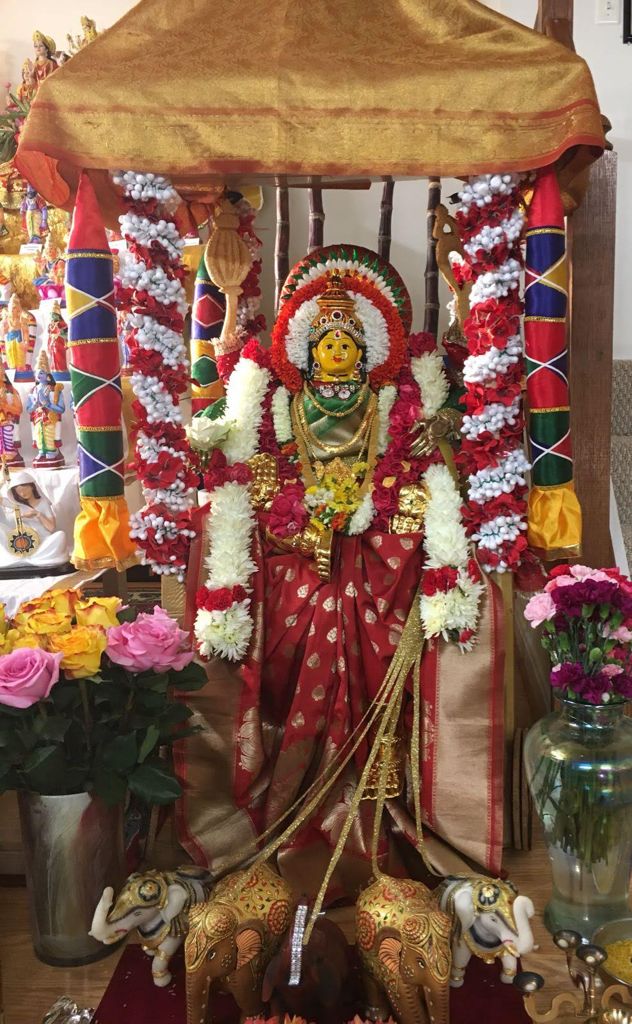
Goddess Lakshmi
Goddess Lakshmi is the divine consort of Lord Vishnu, the protector of the universe. The word Lakshmi is derived from the Sanskrit word Laksya, meaning aim, goal, objectives, etc. It means knowing one’s own goal and understanding life’s objective towards attaining both material prosperity and spiritual Enlightenment. When pleased with the purity and devotion of her worshippers, Goddess Lakshmi imparts upon them both material and spiritual prosperity.
Goddess Lakshmi is commonly portrayed as a beautiful woman with four hands, standing on a full-bloomed lotus flower and flanked by the elephant. One of her hands holds a lotus bud which signifies beauty, knowledge, self-realization, and fertility. The lotus, a flower that blooms in clean or dirty water, also symbolizes purity regardless of the good or bad situations in which it grows. It means that good and prosperity can bloom and not be affected by evil in one’s surroundings. Her four hands mean the four goals of human life: Dharma, Karma, Artha, and Moksha.
Goddess Lakshmi is very often seen with one or two elephants and occasionally with an owl. Elephants symbolize work, activity, and strength. While owl signifies the patient striving to observe, see, and discover knowledge, particularly when surrounded by darkness.
Lakshmi usually wears a red dress sewed with golden threads. Her husband, Vishnu, often represents her. It implies wealth and prosperity are coupled with the maintenance of life, justice, and peace.
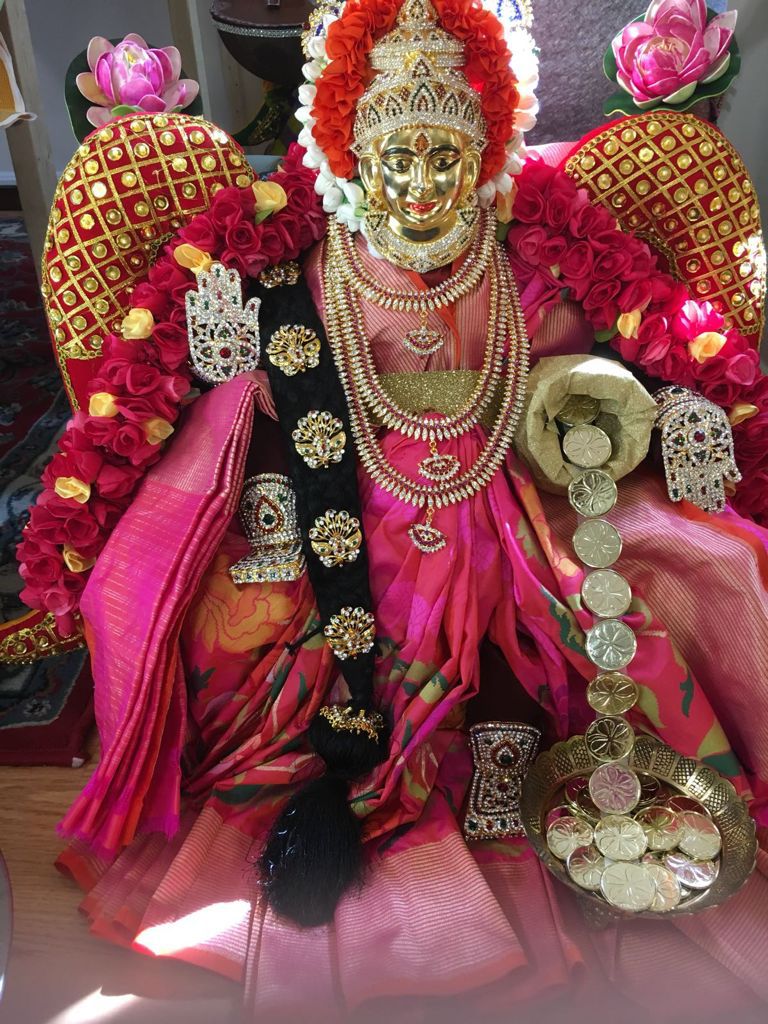
Goddess Saraswati
Goddess Saraswati is the goddess of knowledge and wisdom .She always appears very calm and in her own world.
Adored by her followers in search of excellence in wisdom, education, music, and an independent lady, the name Saraswati came from “saras” (meaning “flow”) and “wati” (meaning “she who has …”), i.e., “she who has flow” or can mean Sara meaning “essence” and swa meaning “self.” So, Saraswati symbolizes knowledge; its flow (or growth) is like a river, and knowledge is supremely alluring, like a beautiful woman. She is depicted as a beautiful fair Goddess with Four arms, wearing a spotless white saree and seated on a white lotus.
Goddess Saraswati is generally shown to have four arms, representing the four aspects of human personality in learning: mind, intellect, alertness, and ego. Alternatively, these four arms also represent the 4 Vedas, the primary sacred books for Hindus.
Goddess Saraswati wears neither jewels nor paints herself with bright colors. The white sari she adorns reflects her essential purity, her rejection of all that is base and materialistic.
She transcends the cravings of the flesh and rejoices in the powers of the mind as the patron of pure wisdom. She embodies all that is pure and sublime in Nature. The four Vedas, books of universal knowledge, were her offspring. Her mount, the swan, personifies pure knowledge and her herald, the peacock, is a symbol of the arts.
She is a part of the Trinity (Tridevi) of Saraswati, Lakshmi, and Parvati. All three forms help the trinity of Brahma, Vishnu, and Shiva to create, maintain and regenerate-recycle the Universe, respectively.

Sri Krishna Leela
Life stages of Krishna
Balakrishna – Baby Krishna
Panchajanya Krishna – Holder of Panchajanya Conch
Balarama Krishna – With Brother Balarama
Gopalakrishna – Protector of Cows
Radhakrishna – Radha’s Krishna
Yashoda Nandana – Yashoda’s Krishna
Makhan Chor – Butter Thief
Muralikrishna – Bearing Murali (Flute)
Mohanakrishna – Infatuating and Fascinating
Damodara – Tied with a cord (daama) around His waist (udara)
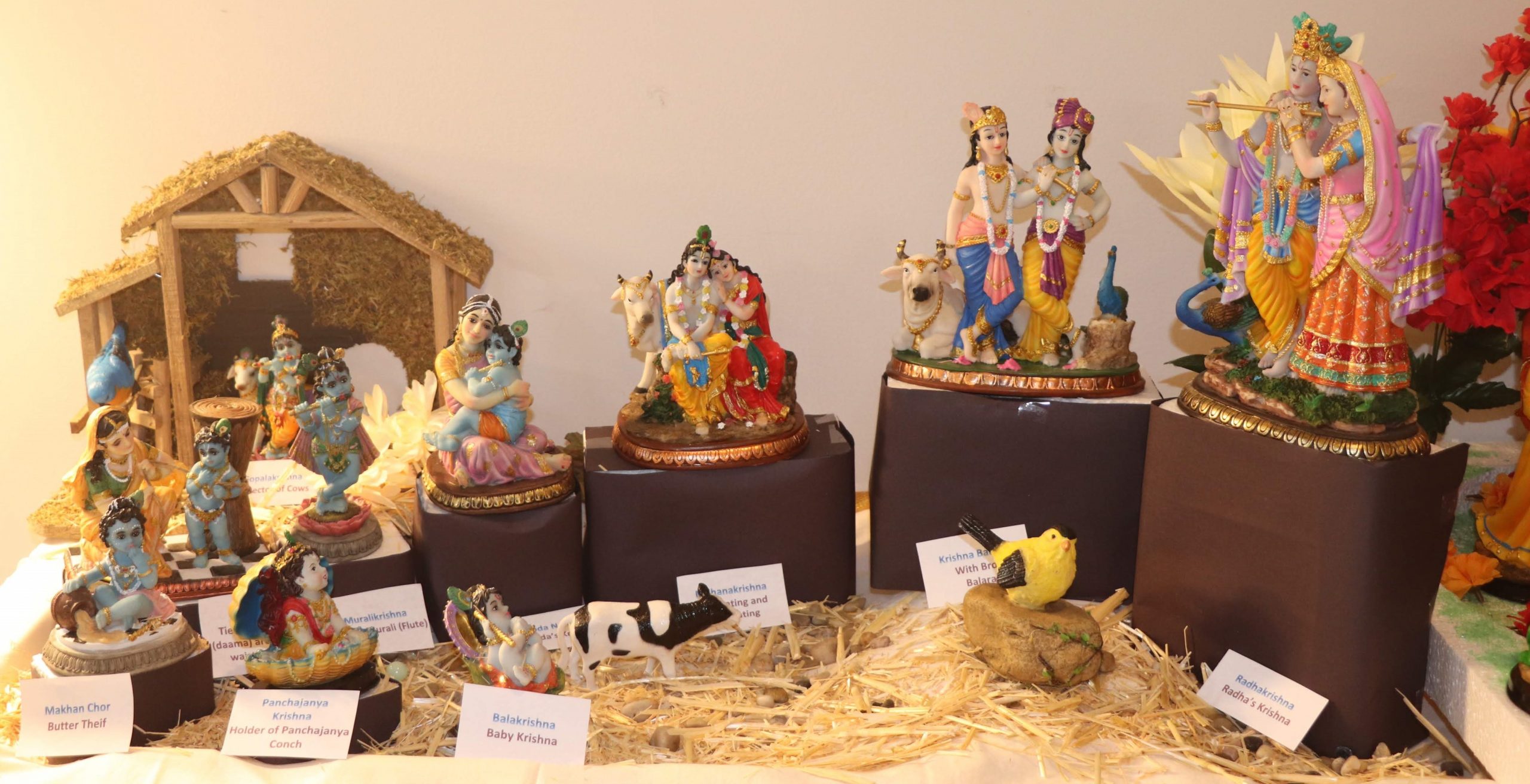
Vrindavan Leela with Varshita Gopis
Varshita Gopis are foremost of Krishna’s devotees after Srimati Radharani. They exemplify Suddha-bhakti which is described as ‘the highest form of unconditional love for Krishna’ . They are eternally the intimate friends of Radha Krishna. No one can equal or exceed the love they bear for the divine couple.The primary nine gopis are considered the foremost of Krishna’s devotees after Srimati Radharani, they are
- Lalitha
- Vishaka
- Champakalata
- Chitra
- Tungavidya
- Indulekha
- Rangadevi
- Sudevi
- Anuradha
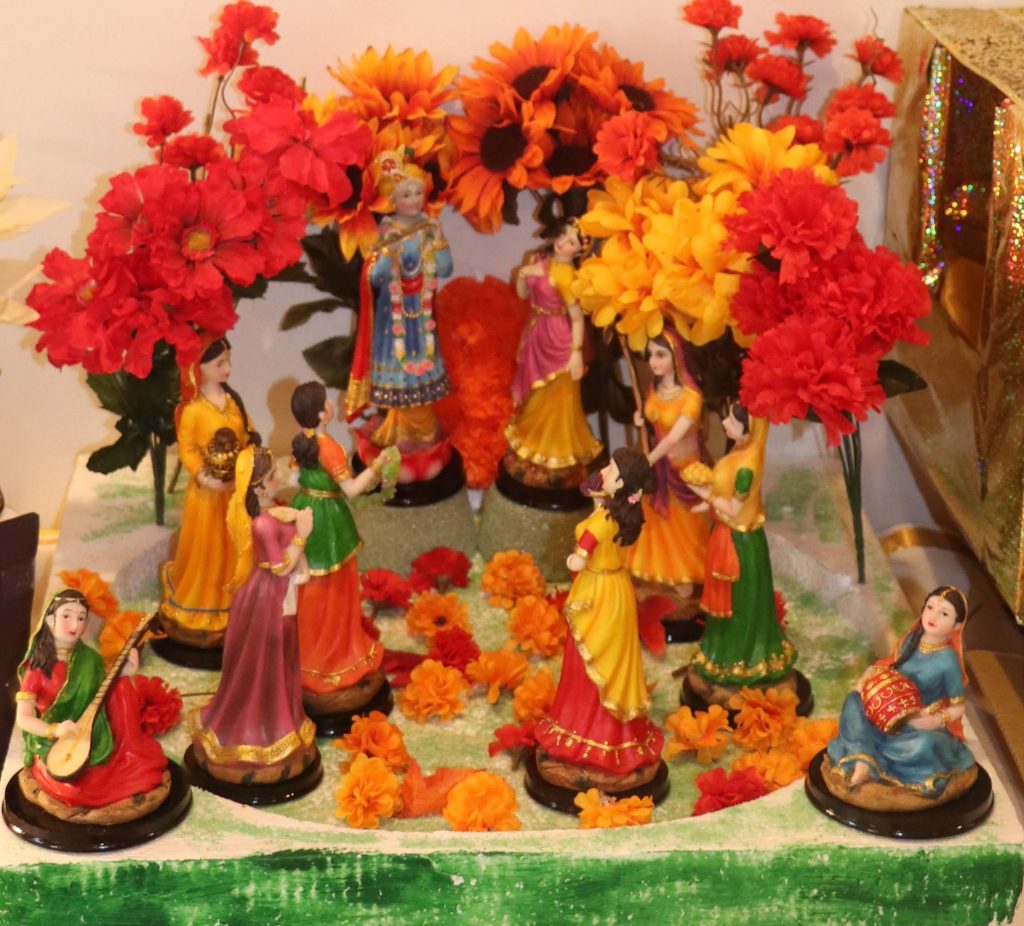
Sangeetha Ganapathi
Lord Ganesha, also known as Ganapati, Vinayaka, Vighnaharta, Buddhipriya, and Ekadanta, is one of the most important deities in Hindu Dharma. He is highly recognizable with his elephant head with a curved trunk and big ears on the human body in Hindu culture. He is the presiding deity of material wealth, health, fertility, happiness, and lord of spirituality. He is also known as the god of intellect and wisdom, the destroyer of selfishness and pride. It is said that he is the personification of the element’s universe in all of its different forms, and figures. He is the Lord of Beginning that every devotee worshipped him before any auspicious events.
Ganesha is derived from Sanskrit’s two words Ganna and Isha god. Ganna means group and Isha mean Lord. So, Ganesha is the Lord of all groups. It means Ganesha is the Lord of the universe. He fulfills the desire of his devotees and opens to them the doors of prosperity and abundance. He is the remover of problems and obstacles.
He is worshiped in many forms , This is a form depicting Ganesha as a musical performer
